Key takeaways
- Understanding the fundamentals of Google Classroom enhanced teaching efficiency and allowed for a smoother focus on student engagement.
- Integrating activist content and fostering a collaborative environment empowered students to express their voices and engage in critical discussions.
- Setting clear expectations for respectful communication and collaboration improved student interactions and nurtured an inclusive classroom culture.
- Reflecting on successes and challenges encouraged growth and adaptability as an educator, transforming setbacks into learning opportunities.
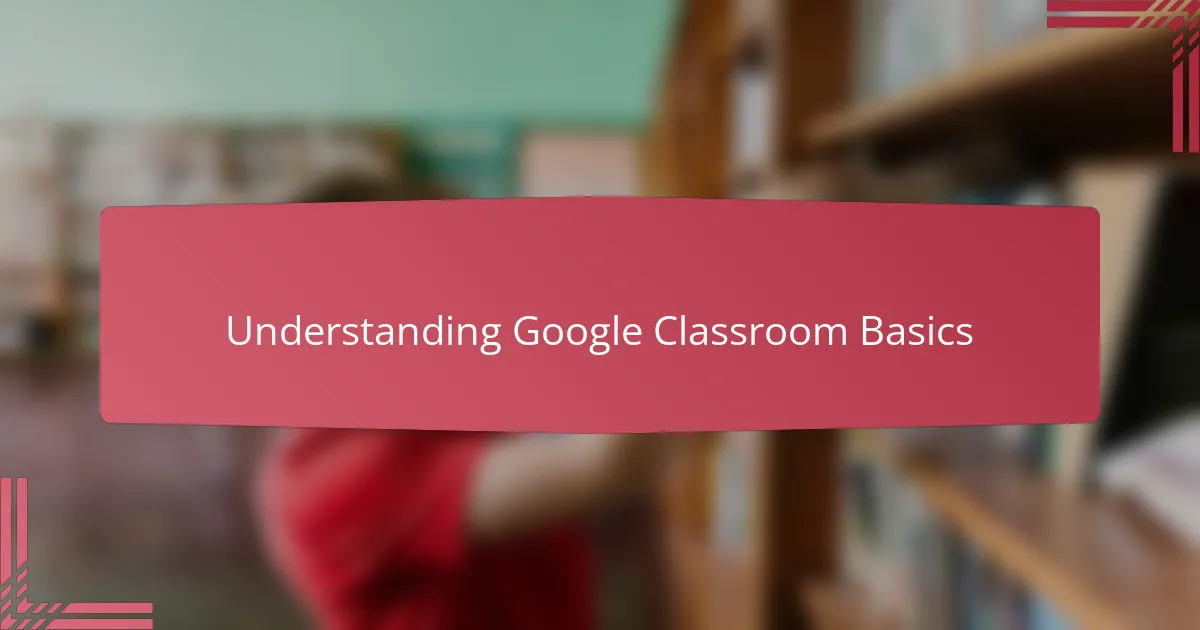
Understanding Google Classroom Basics
Grasping the basics of Google Classroom was a game changer for me. At first, I felt overwhelmed by the digital interface, but once I understood how to create classes, post assignments, and organize materials, it all clicked. Have you ever experienced that moment when a complex tool suddenly makes sense? That’s exactly how I felt.
One thing I’ve learned is that Google Classroom’s structure is designed to mirror a traditional classroom, just in a digital space. This familiarity helped me transition smoothly, allowing me to focus on engaging my students rather than struggling with technology. It made me realize how important it is to invest time in learning the platform’s fundamental features before diving into advanced tools.
The simplicity of posting announcements and assignments, coupled with built-in communication features, truly streamlined my workflow. Instead of juggling multiple platforms and emails, everything I needed was in one place. Reflecting on this, I often wonder: how many valuable teaching moments did I miss before fully understanding these basics?
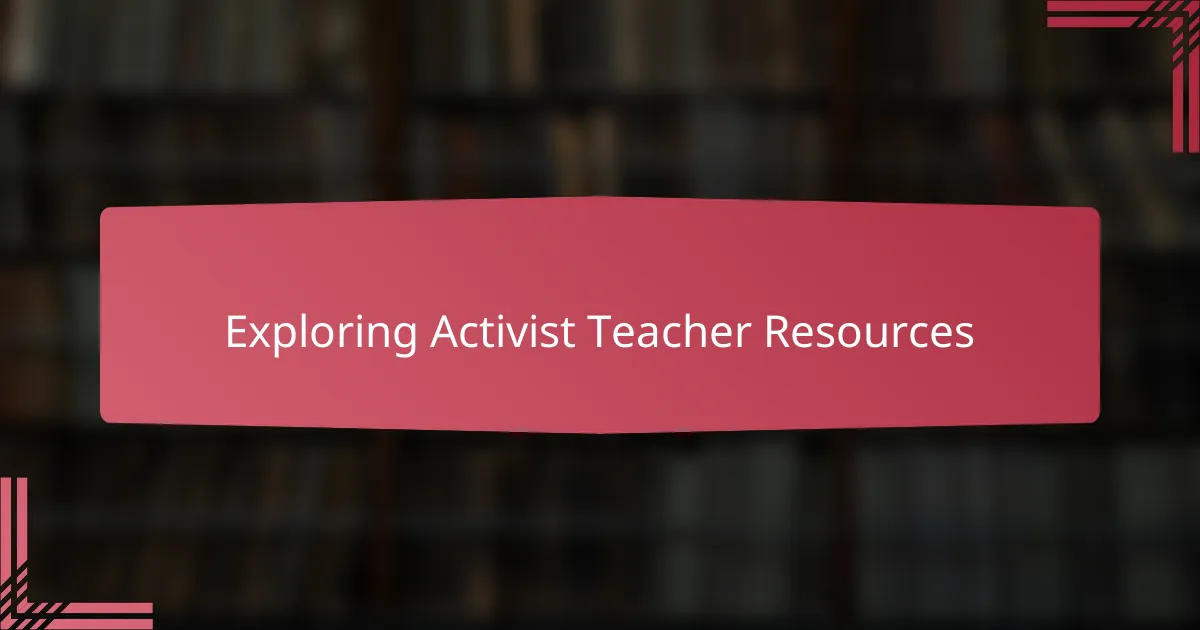
Exploring Activist Teacher Resources
Diving into activist teacher resources opened up a whole new world for me. At first, I wasn’t sure where to start—there are so many websites, toolkits, and communities out there. But once I began exploring, I realized these resources weren’t just about lesson plans; they were about connecting with a purposeful mission to inspire change.
I remember feeling inspired when I found a community that shared not just materials, but stories and strategies about teaching for social justice. It made me ask myself: How can my lessons foster critical thinking and empower students to be agents of change? This question transformed my approach, making every resource I explored feel more relevant and impactful.
What struck me most was how accessible and practical these activist resources are. They blend educational theory with real-world application, which helped me create lessons that are both meaningful and manageable within the school day. Have you ever found resources that don’t just inform you but also energize your teaching? That’s what happened to me here.
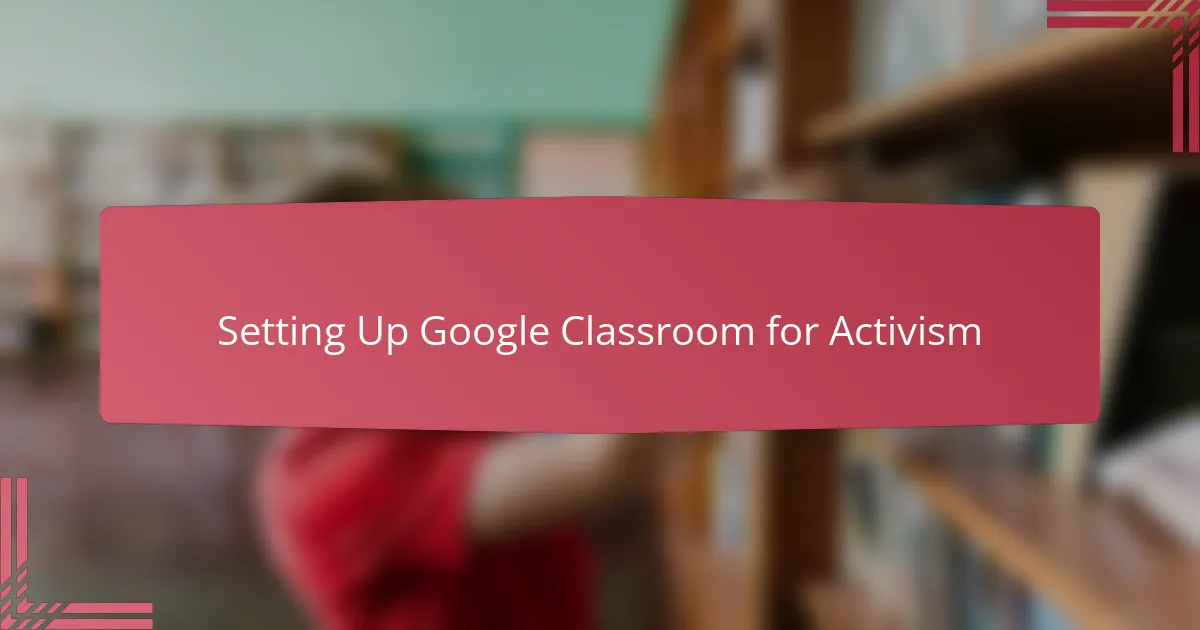
Setting Up Google Classroom for Activism
Setting up Google Classroom specifically for activism was a turning point in how I connected with my students. I dedicated time to customizing the stream and topics to highlight social justice themes right from the start. Have you ever noticed how organizing materials around a clear purpose can shift your whole mindset? That’s exactly what happened—I felt more intentional and focused.
I also brought in recognizable images and resources related to activism to make the virtual space feel alive and relevant. This visual cueing made it easier for students to navigate and reminded me daily of the goals we were working toward. It was like creating a digital rallying point where learning and activism met.
One small adjustment that made a big difference was setting clear expectations for respectful dialogue and collaboration. Google Classroom’s commenting and question features became a safe space for students to share ideas and challenge perspectives thoughtfully. Reflecting on that, I ask myself: How often do educators create environments that truly nurture critical conversations? Google Classroom gave me the tools to do just that.
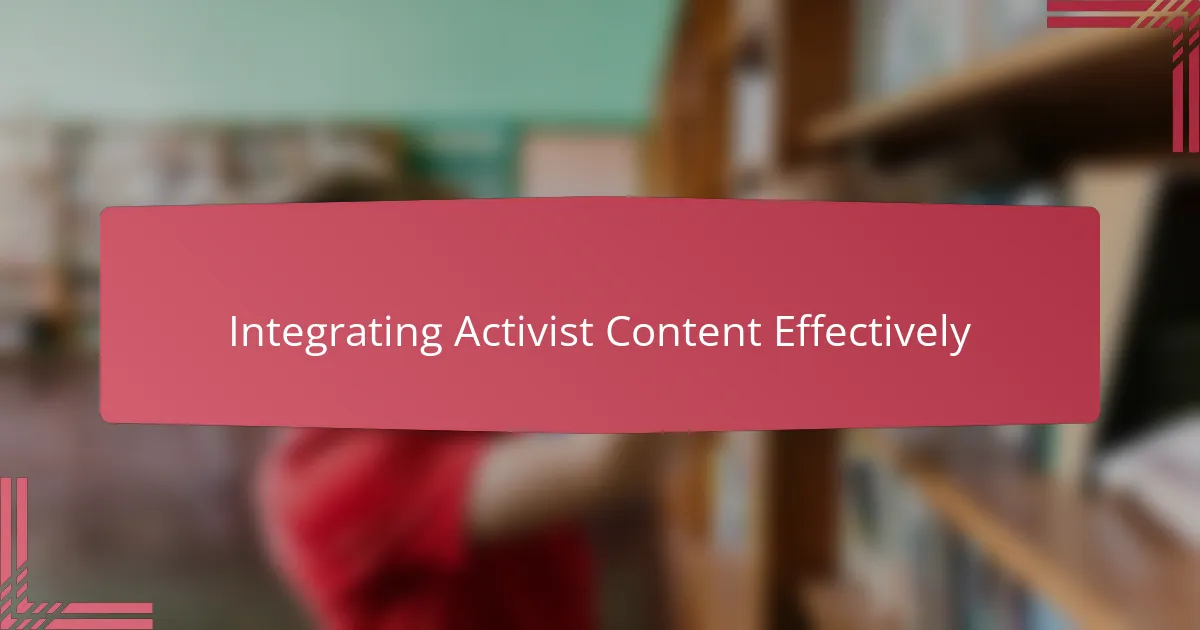
Integrating Activist Content Effectively
Integrating activist content into Google Classroom felt like weaving purpose directly into the fabric of my lessons. I started by curating articles, videos, and projects that challenged students to question the status quo—yet I noticed it wasn’t just what I shared, but how I framed the discussion that sparked real engagement. Have you ever seen students light up when they realize their voices matter? That moment made all the preparation worthwhile.
I also found that using Google Classroom’s Question feature allowed for dynamic dialogues, where students could respectfully debate and build on each other’s ideas. It reminded me how essential a structured yet open space is when tackling complex social issues. Sometimes, I stepped back just to watch the conversation unfold, feeling proud that these digital exchanges mirrored the lively discussions I cherish in face-to-face classes.
One challenge I initially faced was balancing depth with sensitivity—activist topics can be emotionally charged. I learned to provide content choices and reflection prompts that honored different perspectives while encouraging critical analysis. This approach turned Google Classroom into a compassionate learning environment, proving that technology can support not only knowledge but empathy too. Have you found that blending rigor with care transforms your teaching? That’s been my experience here.
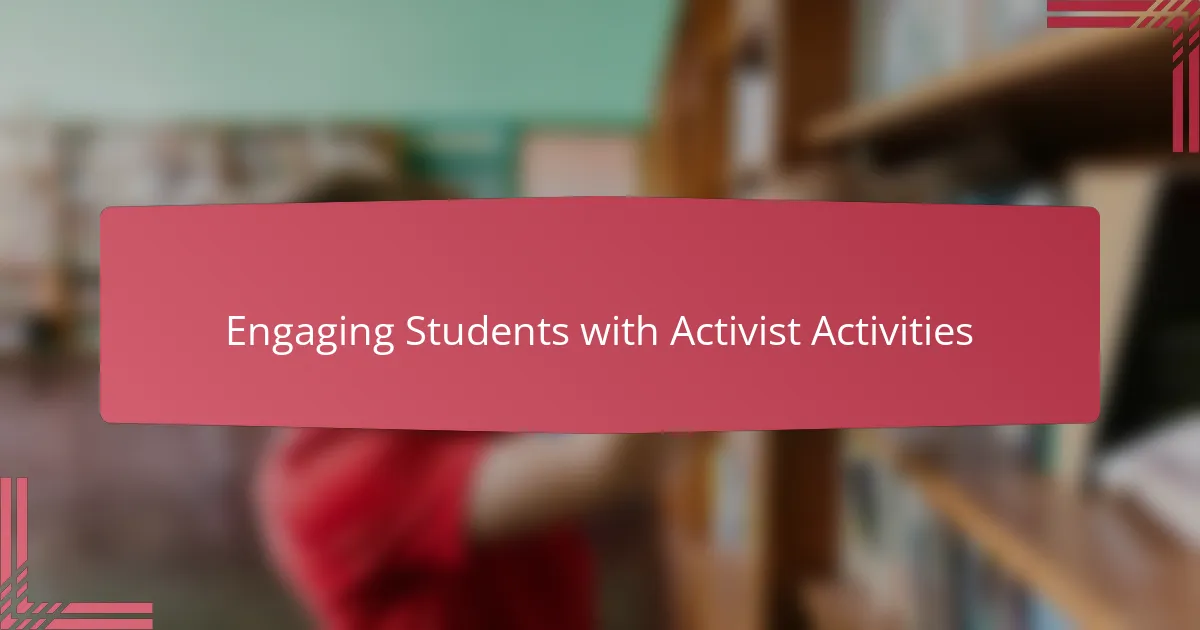
Engaging Students with Activist Activities
One strategy that truly energized my students was assigning activist projects that required them to explore local issues and propose actionable solutions. Watching their enthusiasm grow as they researched their communities reminded me why activism in education matters so much. Have you ever seen students become genuinely invested because the work feels immediate and personal?
I also discovered that using Google Classroom’s collaborative features, like shared documents and group comments, fostered a real sense of teamwork. Students weren’t just completing assignments—they were building ideas together, challenging each other, and deepening their understanding. That collective energy transformed the virtual space into a dynamic hub for activist learning.
Sometimes, I asked myself how to keep these activities inclusive and empowering without overwhelming anyone. Adding choice and flexibility—letting students select their own topics or methods of expression—made a noticeable difference. It honored their voices and sparked creativity, which, in my experience, is the heart of meaningful engagement.
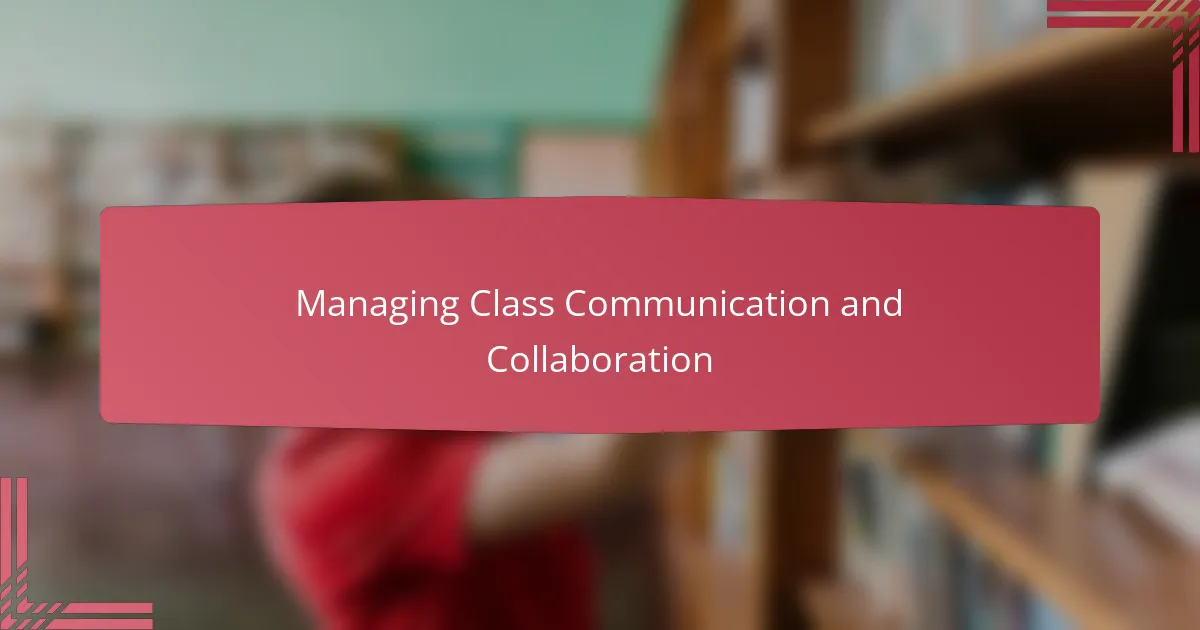
Managing Class Communication and Collaboration
Managing communication in Google Classroom changed how I connected with students. Instead of chasing emails or messages on different platforms, I had one central place where announcements, questions, and feedback happened seamlessly. Have you ever felt relief when all your class conversations are organized and easy to find? That feeling made managing an active, thoughtful dialogue so much smoother.
Collaboration took on a new life when I started using Google Classroom’s group work tools. Shared documents and comment threads allowed students to brainstorm and refine ideas together, even outside of class hours. I remember a project where students learned to respectfully challenge one another’s viewpoints online—it was clear to me that this digital collaboration built their critical thinking in ways traditional discussion sometimes misses.
Of course, fostering respectful communication wasn’t automatic. Setting clear guidelines for tone and engagement from the start became essential. When disagreements arose, I guided students to use the platform’s private comment feature to resolve misunderstandings calmly. Have you experienced how a well-managed online space can encourage more thoughtful exchanges than even face-to-face talks? That possibility made me realize how powerful managing communication and collaboration can be in a digital activist classroom.
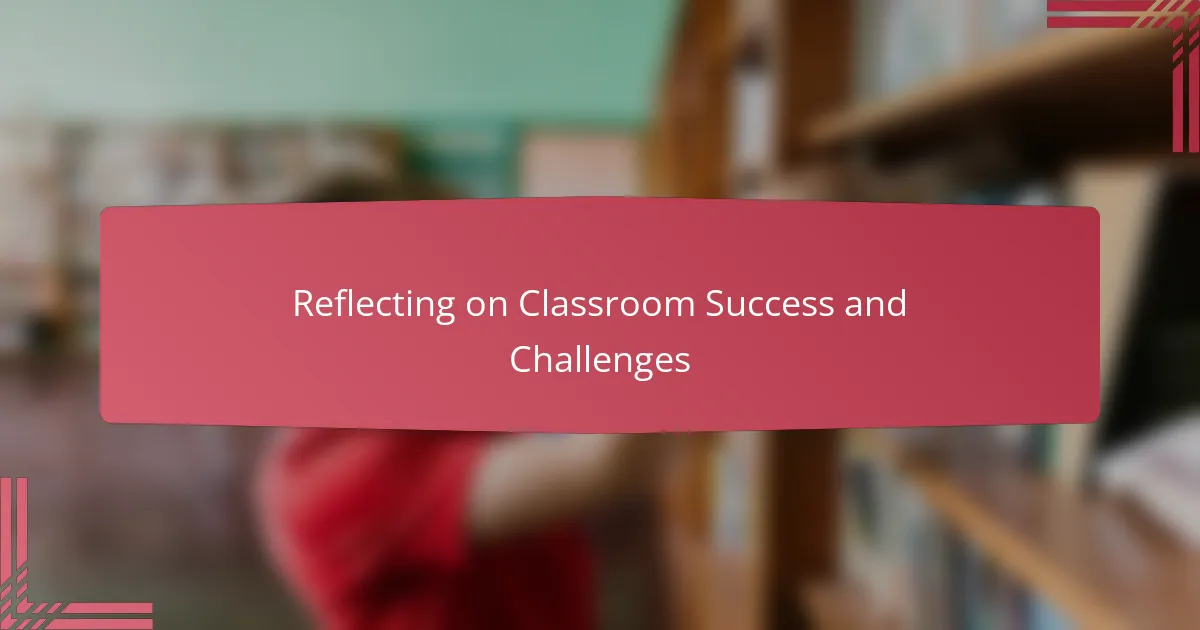
Reflecting on Classroom Success and Challenges
Looking back on my time using Google Classroom, I realize how much growth happened—not just for my students, but for me as an educator navigating new terrain. There were moments when the digital format made engagement feel distant, and I questioned if my efforts truly reached each student. Have you ever wondered if technology supports deeper connection or sometimes creates barriers? I found that reflection helped me adjust my approach regularly.
One success that stands out was seeing students take ownership of their learning through thoughtful participation in discussions and projects. Yet, challenges remained, especially balancing the pace to keep everyone included without overwhelming them. This pushed me to experiment with pacing and scaffolded supports, which gradually improved the flow. It’s a constant reminder that reflecting honestly on what works and what doesn’t is key to evolving as a teacher.
I also noticed that setbacks, like technical glitches or miscommunications, became opportunities to model resilience and problem-solving. Instead of letting frustration take over, I shared those moments openly with students, turning challenges into teachable ones. Reflecting on these experiences, I ask myself: how often do we embrace imperfections as part of the learning process? For me, this mindset made all the difference in cultivating a supportive classroom community online.